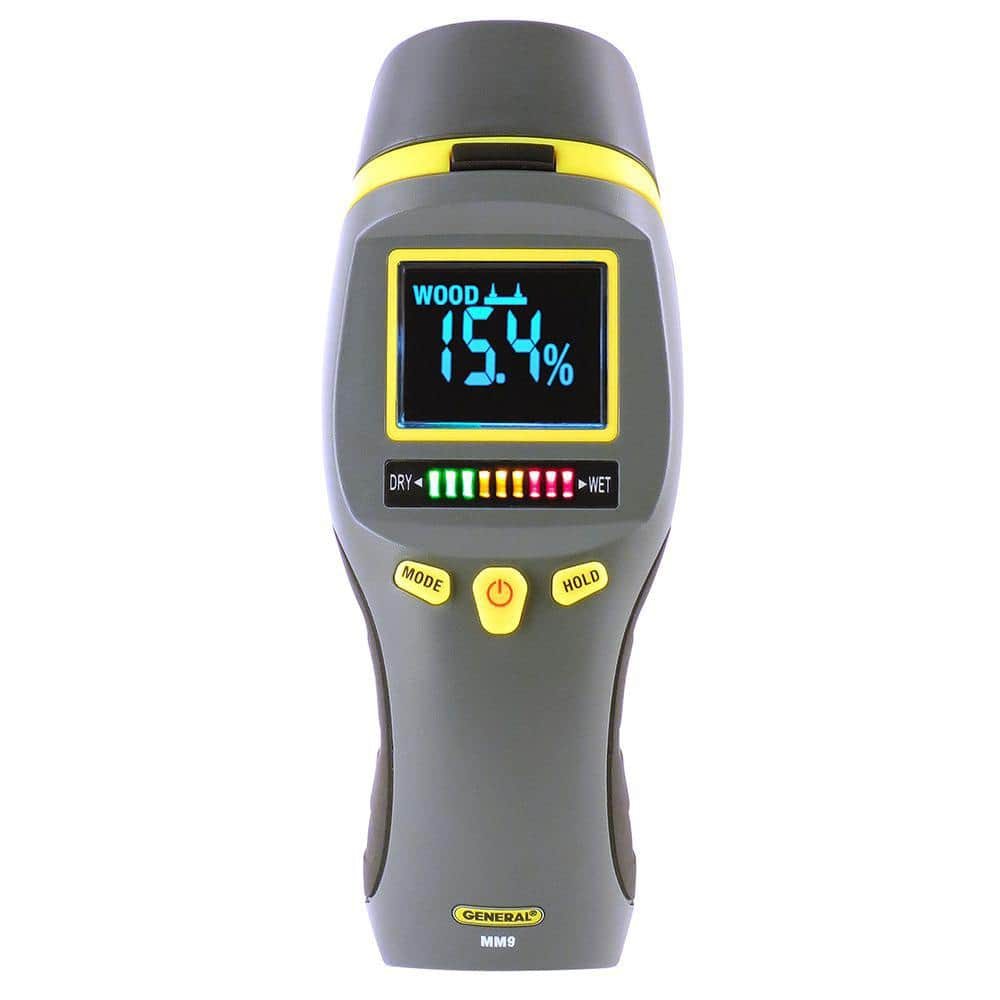Moisture Meter Reviews: Comparing the Best Versions for Expert and DIY Use
Moisture Meter Reviews: Comparing the Best Versions for Expert and DIY Use
Blog Article
Understanding the Importance of a Dampness Meter in Protecting Against Mold And Mildew and Water Damage in your house
In the realm of home maintenance, the existence of moisture can usually be a quiet yet formidable foe, capable of creating pervasive mold and mildew growth and perilous water damages if left unattended. Among the peaceful setting of a residence, concealed moisture problems can make beneath the surface, posturing a risk to both residential property and health. Nevertheless, outfitted with the right devices and knowledge, house owners can proactively battle these possible dangers. Understanding the relevance of a wetness meter in this fight is not merely an alternative but a calculated need.

Significance of Wetness Discovery
Reliable moisture detection techniques are vital for safeguarding homes and protecting against possible mold and mildew growth and water damage. Moisture can seep into different building materials, causing architectural concerns and carcinogen - Moisture Meter. By utilizing a dampness meter, property proprietors can proactively identify areas vulnerable to excess dampness, enabling prompt treatment and reduction methods
Wetness meters offer precise readings of moisture degrees in various products such as wood, drywall, and concrete. This data helps in identifying areas of concern, also in hard-to-reach or surprise locations. Early detection of moisture accumulation makes it possible for punctual fixings or changes to stop additional damage.

How Wetness Meters Work
Moisture meters play a crucial duty in the positive identification of excess dampness, aiding in the prevention of potential mold growth and water damages by supplying accurate readings of moisture levels in various structure materials. Some progressed wetness meters pin both integrate and pinless technologies for detailed dampness discovery. Recognizing how moisture meters function is vital for prompt and exact moisture degree assessments, enabling effective preventive steps against mold and water damage.
Finding Early Indication
Upon initial inspection of a residential property, acknowledging subtle indicators of excess dampness comes to be vital in the very early detection of potential mold and mildew development and water damage. Some usual very early indication consist of mildewy smells, water discolorations on ceilings or walls, peeling off paint or wallpaper, and deformed or tarnished surface areas. Moldy odors often show the existence of mold or mold, even if no noticeable indications are apparent. Water discolorations can indicate leakages or seepage, while peeling off paint or wallpaper might be a result of wetness jeopardizing the attachment of these products to the surface. Distorted or stained surface areas, such as twisting floorboards or discolored drywall, are clear indicators of water damage. Moisture Meter. Furthermore, an increase in allergic reaction signs or respiratory issues amongst passengers may suggest the presence of mold and mildew as a result of excess wetness. By immediately identifying and resolving these early caution indicators, homeowners can reduce the danger of comprehensive mold development and water damage in their residential or commercial properties.


Protecting Against Mold Development
Acknowledging very early warning indicators of excess wetness within a residential property not just makes it possible for timely discovery of potential mold and mildew growth and water damages yet also offers special info as a proactive procedure in preventing the spreading of mold and mildew. To effectively stop mold growth, it is crucial to deal with any kind of sources of wetness without delay.
In addition to attending to moisture resources, maintaining indoor humidity degrees listed below 60% can significantly hinder mold growth. Proper ventilation, ample insulation, and using air conditioning system or fans can assist manage interior moisture degrees. Keeping an eye on dampness levels in areas susceptible to moisture, such as cellars and creep rooms, utilizing a view it wetness meter can additionally assist in very early discovery of raised dampness degrees and prospective mold and mildew development. By taking aggressive actions to prevent excess dampness and mold and mildew development, homeowners can safeguard their residential property and interior air top quality.
Benefits of Regular Surveillance
Normal monitoring of wetness degrees in a home can play an essential function in keeping a healthy indoor atmosphere and protecting against potential mold and water damages. By routinely inspecting dampness degrees, homeowners can find any kind of concerns promptly and take required actions to stop mold and mildew development and water damages.
Moreover, regular monitoring enables house owners to track patterns and patterns in dampness degrees over time. By establishing a baseline and monitoring changes, individuals can determine any type of locations of problem or potential vulnerabilities in the residential or commercial property's framework. This data-driven strategy enables targeted treatments and maintenance efforts to deal with underlying concerns prior to they rise right into even more considerable problems. Inevitably, the constant monitoring of moisture levels encourages homeowners to protect their property, guard their wellness, and preserve the stability of their interior setting.
Conclusion
In conclusion, the use of a dampness meter is important in protecting against mold and water damage in homes. By detecting early caution indicators of moisture, house owners can take aggressive steps to stop mold and mildew growth and expensive repairs.
By using a dampness meter, building owners can proactively determine locations prone to excess dampness, enabling for timely treatment and mitigation techniques.
Dampness meters provide precise readings of wetness degrees in various products such as concrete, drywall, and timber.Dampness meters play a critical function in the positive identification of excess wetness, helping in the avoidance of prospective mold and mildew development and water damages by supplying exact official statement readings of moisture levels in various structure products. Recognizing just how moisture meters feature is essential for prompt and exact wetness level evaluations, allowing effective preventive actions versus mold and mildew and water damages.
Checking wetness levels in areas prone to wetness, such as cellars and crawl spaces, using a dampness meter can additionally help in early discovery of raised wetness levels and potential mold and mildew growth.
Report this page